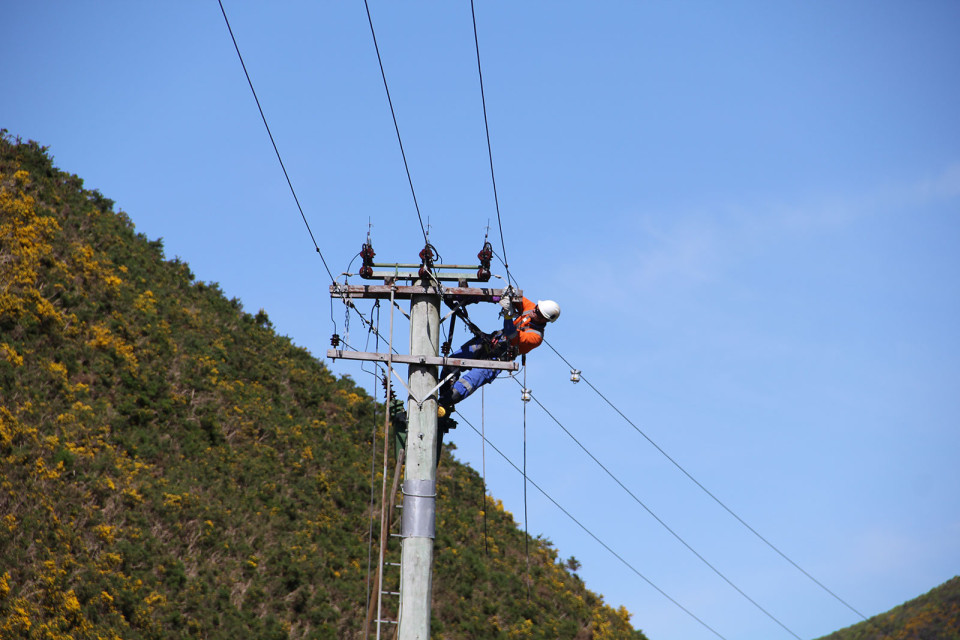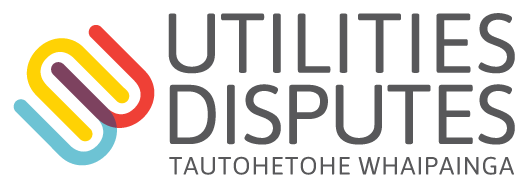While most of our equipment is located in the road reserve or on land owned by us, some of it is on private property.
Jump to:
Rights and responsibilities
Privately-owned assets
Service lines and cables
Secondary networks
Rights and responsibilities
Lines and cables, poles, substations and other network equipment (assets) installed on private land or within buildings before 1993 are protected by existing use rights under the Electricity Act 1992 (the Act). This means that many of our assets will not have, or need, an easement. An easement is a property interest registered on a property's title.
The Act provides us with a statutory right of access to our assets so that we can inspect, maintain/upgrade, operate and repair them, but property owners and occupiers have certain rights too. For example, Wellington Electricity or its contractors must give sufficient notice (as set out in the Act) before entering onto land where our assets are located, apart from in an emergency – that is, to keep the power on, safe, or to prevent harm to life or property.
In the notice, we'll advise of the work we're going to be doing (including where we need to access), when, and how long it'll take. In emergency situations where we're not able to do this, our contractor must still let the owner or occupier of the land know as soon as possible, which might in some cases be retrospectively. Note that we may need to enter onto land to provide the notice.
An owner or occupier may:
- refuse access if the Act is not followed
- set reasonable conditions relating to entry, such as preferred access routes or the need to 'sign in' to commercial premises
- request to move our assets at their expense, which we'll provide a quote for if we can
- request supervised access to a substation if the accommodation (i.e. transformer room) is owned by the property owner
- refer any unresolved land access complaints to Utilities Disputes, and/or refer any disputes to the Environment Court.
As well as providing notice, we'll also ensure that we:
- take steps to minimise any direct impact to land we access; re-instating land to its previous condition where possible (we must prevent significant property damage, so far as is reasonably practicable)
- ensure that any asset changes or other activities don’t cause 'injurious affect'
- comply with other relevant legislation such as the Electricity (Hazards from Trees) Regulations 2003 and Resource Management Act 1991
- consult with tangata whenua, where appropriate
- abide by the terms of any applicable easements or other legally binding land agreements
- leave any gates as they were and drive in a safe manner, taking particular care not to disturb livestock on rural properties
- behave in a courteous, considerate, and professional manner at all times
- do everything we can to minimise disruption (for example, we’ll only enter upon land at reasonable times, unless in an emergency)
- promptly respond to all reasonable requests for information about our assets on private property
- take into account any concerns of land owners or occupiers and accommodate these the best we can.
If you're not sure if someone at your property is there on our behalf, ask them for identification or phone us on 0800 248 148.
Privately-owned assets
Not all electrical assets on private property are owned by us. For example, there are a number of privately-owned power poles across the Wellington region that are the responsibility of landowners (or in some cases, other pole owners such as Chorus) to maintain.
These are known as service poles and generally serve a single property. In cases where multiple properties are supplied via a service pole, Wellington Electricity may have an interest in the pole but doesn't necessarily own it.
If we identify any pole as being in a potentially unsafe condition during the course of our work, we'll inform the owner of the pole so that they can make arrangements to have it repaired or replaced by a qualified electrical contractor of their choice.
If we have an interest in the pole (as described above), there may be instances where we're able to arrange replacement of it at no cost to the landowner, if they agree. When this happens, we become the owner of the new pole and take responsibility for its ongoing maintenance.
Power lines (overhead) and cables (underground) running from a point of supply to a property are known as service mains (covered below). The owner of the property being supplied (the consumer) is responsible for the maintenance and repair of these assets on their property.
Service lines and cables
As mentioned above, consumers are responsible for the maintenance and repair of their service line or cable (service main), which usually runs from Wellington Electricity’s network to a consumer’s home. In most cases, consumers are responsible for the section of the service main located on their property. The point at which ownership and maintenance responsibility changes is typically at the property boundary.
Where a single service main serves two or more properties (for example, where a house has been subdivided into two flats), the owners of those properties are usually jointly responsible for maintenance of the service main.
Sections of a service main that cross private property before entering a consumer’s property have different legal statuses depending on when they were installed. Due to numerous changes in legislation since 1891, each situation is different, but as a general rule:
If the service main was installed from 1993 onwards:
It will usually be covered by an easement between the consumer and the owner of the land crossed by the service main. The easement should be registered on the titles to the affected land. Easements generally provide that the consumer is responsible for maintaining the part of the service main on the other party’s property (as well as the part on their own property), but can include other maintenance obligations. We recommend checking the easement to confirm this, which you may be able to order online from Toitū Te Whenua Land Information New Zealand (alternatively, a property lawyer can check for you).
If the service main was installed before 1993:
It probably won’t be covered by an easement, as this wasn’t needed under the law at the time. Instead, the part of the service main crossing the other party’s land might be owned by Wellington Electricity or by the consumer served by the service main. In these cases, we'll need to make further enquiries to confirm which is the case. This process involves us:
- checking current and historical public and internal records such as land titles, plans and network drawings
- reviewing any applicable easements or other legally binding land agreements
- engaging our lawyers to provide specialist legal expertise.
Service mains installed before 1993 are "existing works" and have protection under the Act. These protections apply whether the service main is owned by the consumer or by Wellington Electricity.
Service lines and cables are assumed to have been lawfully installed in accordance with historical legislation. For this reason, we’re not able to investigate any claims of historical unlawful installation without clear supporting evidence.
Secondary networks
There are also several types of privately-owned electricity networks, known as secondary networks, that are connected to our network. The most common of these are embedded networks, which operate independently and are considered electricity distributors just like us.
In these cases, we provide a supply of electricity to a 'gateway' installation control point (ICP), with anything beyond that being the responsibility of the embedded network owner to manage. The owner (or their agent) also takes responsibility for the ICP itself.
Any consumers connected to other types of secondary network are considered as being supplied by Wellington Electricity. However, any electrical equipment beyond our point of supply to the private network (known as the network demarcation point) is the responsibility of the network owner to maintain.
Secondary networks are typically found in multi-occupation commercial and residential premises (like office blocks, shopping malls, airports, retirement villages, apartment complexes and other accommodation, e.g. hotels), but can be in rural areas too.
Utilities Disputes have produced a factsheet which provides more information on secondary networks.



To help improve our service, what feedback can you give us about this page?